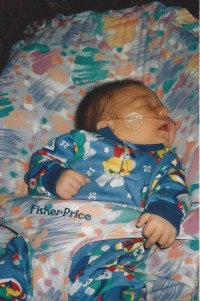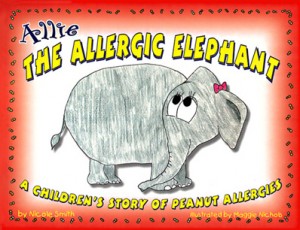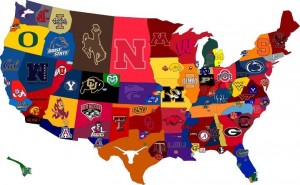
Nicole Smith is the Founder of AllergicChild.com and the author of three best-selling children’s books about food allergies. Allie the Allergic Elephant: A Children’s Story of Peanut Allergies was her first foray into writing. She is an almost-native of Colorado, and continues to speak and advocate for children with food allergies at the state level and in her school district’s Food Allergy Task Force, in addition to writing a blog about living with food allergies on AllergicChild.com.
Gina Clowes is an author, speaker and Master Certified Coach whose advice and parenting tips have appeared in numerous print, radio and television features including CNN, ABC World News Tonight and People Magazine. She is the author of the best-selling children’s book One of the Gang: Nurturing the Souls of Children with Food Allergies and writes a regular column The Parenting Coach for Allergic Living Magazine.
——————————————————————————————————————————————————————————————————————–
Children with food allergies don’t come with an instruction manual, so it probably wouldn’t surprise you to know that over the years we’ve received thousands of emails and phone calls from parents struggling to manage their child’s food allergies. As our allergic children are both teenagers now, we have the benefit of hindsight. We can easily spot common mistakes that parents make because we’ve made the exact same mistakes ourselves at one time or another.
If you’re like us, you’ve seen a lot of articles telling you what to do to help your child with food allergies at school, camp or on a sleepover. In this article, we’d like to try a different approach by outlining some of the most common mistakes that parents of food allergic children make. Our hope is that with a heads up and some advance warning, you can learn from our mistakes without the painful consequences.
Mistake #1: The Unprepared Parent
Nicole:
I really feel for the Mom who calls or emails me two weeks after school has started. She is likely to have a kindergarten student, and hasn’t done anything to prepare the school for her child’s allergies. Inevitably her child is contact allergic in addition to ingestion allergic, and therefore the child needs a number of accommodations. The school is overwhelmed and balking at everything she is requesting. This Mom is likely crying and overwhelmed herself. What did she do wrong? She didn’t prepare the previous spring before the school year started!
It’s unfair for a parent to expect a school/school district to be able to manage a child’s food allergies if they are informed on the first day of school! Lesson plans frequently need to be changed, epinephrine autoinjector training needs to be done…there are so many details that cannot be completed on the first day of school.
Gina:
Some parents think that a passing conversation they had with the nurse at the kindergarten registration or with the principal months ago laid the foundation for a safe plan for their child.
Then they are devastated when they find out that the bus driver is not trained and their child is sitting alone at lunchtime or during classroom birthday celebrations. These parents expect their schools to be ready to accommodate allergic children but in many cases, they’re not.
Developing an individual written accommodation plan is one of the most important projects parents will ever manage. It takes planning, education and dedication to see this through. A great place to start is by reading the CDC Guidelines for Managing Food Allergies in Schools to learn about the recommended practices for parents and school administrators.
Mistake #2: Ineffective communication
Gina: Another issue I see with parents is that their communication style affects the process in a negative way. I’ve received emails that are 300 words long in one dense block of text. And even upon re-reading, I’m not sure what the parent wants or needs.
Before you open your laptop, know why you are emailing. Start with a concise request, and then fill in the details. Then re-read your message to make sure that the tone is appropriate and that your message is clear.
Nicole: I’ve found that I also need to read and re-read my emails to ensure that I’ve spelled everything correctly. Anaphylaxis needs to be communicated as a serious issue, and spelling it correctly – along with EpiPen, Benadryl, and Auvi-Q – are all important to ensure that school personnel get educated appropriately.
Mistake #3: Asking for too much
Nicole: When my son started kindergarten, our allergist wrote a letter to the school district 504 Administrator outlining exactly what he needed to remain safe in school. In our case, the main items were an allergen-free classroom and peanut and tree nut free zone in the lunchroom(figuring that most children wouldn’t be bringing in fish or sesame for lunch); and for kids to wash hands after lunch.
Had we asked for a peanut-free school without the medical support of our allergist, we would have been asking for too much. And in our son’s case, a peanut free school would do nothing for his tree nut, sesame, fish or shellfish allergies.
Gina: I am all for restricting food or allergens from the classroom, the learning environment, especially when there is a separate cafeteria. However, school-wide bans are often not a feasible food allergy management strategy especially when you are dealing with milk, wheat, or egg allergies.
If a district decided to manage food allergies with a school-wide ban for a peanut-allergic child, what would they do when they had a child who was severely allergic to milk and egg?
Would you ban a food for one child but not the other? Again, restricting food or allergens from the classroom is different and is an accommodation that can work well to foster inclusion and minimize risk of exposure.
Mistake #4: Taking on the burden of all accommodations yourself
Nicole: I made this mistake with my son at first. He was the first child with severe food allergies that our school district had ever educated. We were blazing a trail, and when the kindergarten classroom teacher wanted to hand out safe treats to all the students DAILY, I provided a safe snack for my son to have. I also provided safe cupcakes for birthday celebrations frozen in the school freezer for ‘just in case’ a party occurred! Today, I wouldn’t do that. I would ask that either all the students have no snack or I’d ask that every child get the same snack that would also be safe for my son.
Gina: What tends to happen is that teachers and other school officials think that when Johnny needs a treat due to an upcoming birthday celebration, it is his mother’s job to provide a safe one. When in reality, if the school is serving a free treat in class, there needs to be a free treat for Johnny as well, and it needs to be safe for him. For classroom parties and other school celebrations, schools are responsible for what is served in the classroom regardless of who bakes or buys it. This doesn’t mean that parents can’t send in “safe” treats for their child. This option should be available to parents, however it should not be a requirement.
Mistake #5: Disclosing Private Medical Information
Nicole: We probably disclosed too much when our son was in elementary school. We wanted for everyone to know about his food allergies so that he would be safe. The problem was that it backfired and our son ended up getting bullied because other boys knew where he was different. And kids being kids – they pounced on that! I’ve learned that it isn’t necessary to give all the parents, teachers and students the medical details about my son’s food allergies. Instead, it’s the school’s job to adhere to the 504 Plan and FERPA (Family Educational Rights and Privacy Act).
So, it’s not up to the parent to send out a letter stating, “my child has food allergies, please keep him safe.” The school needs to send out a letter stating, “we have students in kindergarten who have milk allergies, please refrain from sending in any food with dairy.” It’s best if this letter is signed by the school principal and/or school nurse.
Gina: Severe food allergies weren’t often recognized as a disability back then, so parents felt they needed to take on the entire burden themselves. They were trying to get classmates and other parents to understand in the hopes that they would protect the allergic child. They were asking for favors from the other parents to keep their child safe and included. I favor a more formal approach.
We don’t have wheelchair ramps, rails in bathrooms and handicap parking spaces because someone asked for a favor. Accommodations like these are made because they are the law.
It’s fine to educate all students about food allergies in general, and certainly kids can let their friends know about their allergies. However, in my experience appealing to classmates is not the most effective approach to keeping your child safe and included at school.
Mistake #6: Not understanding the law
Gina: This leads into the most serious mistake that parents can make- not understanding the laws as they pertain to severe allergies in school. When we have our first baby, we typically buy the book, subscribe to the magazines, and we read about the pacifiers, formulas and car seats. We acclimate to a whole new world. It’s a similar shift in reality when you have a child with food allergies, but some parents don’t buy the book, or read the reports.
Advocating for your allergic child in school is the most important job you will likely face. It is a huge undertaking that takes education and preparation. It’s a project. If you approach it casually, by chatting with this person and that person, by thinking you know the facts by comments you read on social media, you’re likely to start off on the wrong foot. When this happens, it’s difficult to right the ship.
If you haven’t started yet, I’d encourage you to start by reading the CDC Guidelines for Managing Food Allergies in School and Early Care and Education Programs. Learn the laws and the recommended accommodations, plan how you will proceed, and document your steps throughout the process.
There is a concept called “Sensitivity to Initial Conditions” and this means that subtle differences in the beginning can result in wildly different outcomes at the end. I’ve seen this play out time and again with parents and schools. Your initial contact with the school including the form and content of your communication, and your tone and demeanor lays the foundation for your relationship going forward.
Nicole: We were lucky that our school district understood the laws available to them in 2001 when our son started kindergarten. Additionally, my husband and I had an understanding that anything we agreed to with our school district needed to be in writing.
We relied on the 504 Plan and the Food Allergy Action Plan that were developed to keep our son safe and included. We started out on the right foot by having both of these plans prepared in the spring before he started kindergarten. The principal of the school and the school nurse together wrote the letter to kindergarten parents asking for none of our son’s allergens to ever be present in the classroom. This was met with much consternation on the part of several parents. Yet, these two school professionals took on our son’s medical condition with decisive action and kept my husband and I updated with any issues that they had to handle. It has been a partnership with the school district ever since between our family and the district staff. We had the law on our side, and thankfully a wonderful school district that was more than willing to abide by the law and to do anything necessary to keep our son safe and included.
When food allergy parents learn to advocate well for their child, they pave the way for every parent who comes after them. They makes it that much easier for the next parent and that much safer for the next child. Every conversation, every email, every EpiPen or Auvi-Q training is like a coat of paint that we apply and someday soon, we’ll have painted a whole new landscape: a world where food allergies are understood and accommodated everywhere.



































